Sea turtles
Sea turtles
One of my favorite animals is the turtle, and especially the sea turtle. I remember when I was little at my grandfather's house, there were two tortoises in his garden, they gave them salad and fruits and at the end of the winter, we watched their hole because they were hibernating we waited impatiently for them to come out to feed them and give them something to drink after that long nap!
The tortoises are beautiful but I think that sea turtles are even more so. Maybe because we feel like they are flying when we see them underwater. I had the chance to see one during a dive in Egypt (I acquired level two scuba diving before having my children, I had to stop to take care of but one day I would like to go back to explore the seabed, it's wonderful, it's another world full of colors and peace of mind).
The oldest fossils of sea turtles that have been found are 110 million years old.
The scientific theory says that after some 150 million years of terrestrial life, some turtles have reached the sea and adapted to their new aquatic environment.
Their skeleton was lightened, their limbs were transformed to swim, their carapace flattened, their lungs adapted to long apneas, the vision adapted and their necks lost their ability to retract into the shell.
Sea turtles are the turtles of the Chelonioidea super-family1. They are present in all the oceans of the world with the exception of the Arctic Ocean.
The leatherback turtle is the largest, measuring 2 m in length, 1 m to 1.50 m wide and weighing about 600 kg. The average size of other species ranges from 50 cm to 1 m.
These species are all vulnerable or threatened. They are the subject of protection or restoration plan locally, but pollution, poaching and by-catch by fishing gear remain worrying causes of population decline.
Identification
Sea turtles are ectothermic reptiles (organisms that produce little or no heat) that have a pulmonary respiratory system, which corresponds to a complete adaptation to terrestrial life.
In addition to their kidneys, they have glands near their eyes that are able to expel excess salt from their bloodstream. Their metabolism is able to withstand high concentrations of CO2 during deep dives. They can extract 35 to 52% of the oxygen from their breathing. Their vision is very developed. The eyes are protected by three eyelids, their hearing is particularly fine even if they have no external ears, but an inner ear, under a hearing plate. Their sense of smell, on the other hand, is rather inefficient. Sea turtles have only one excretory orifice, which is also used for breeding.
The sex of the turtles is not apparent. Males have a larger tail than females.
Their sexual characteristics are not very marked and some females can be confused with males. Only a genetic examination can be certain of the sex of the animal.
Their flattened carapaces allow them to move easily under water, they also play a protective role and allow them to store heat.
This adaptation, acquired after their entry into the marine environment, allows them to descend very deeply, where the temperatures are very low. We measured a diving record of 6 hours for a green turtle.
Unlike tortoises, they have lost their ability to retract their limbs.
Their carapace is lighter than their terrestrial cousins, besides, some of the largest sea turtles have lost their scales and their carapaces are covered with a thick leather.
Turtles can carry live organisms that use them as habitat or means of transport. Like remoras on sharks or on rays for example.
They can swim quickly and several species are capable of speeds of up to 35 km / h.
Some sea turtles can live up to 150 years or even longer.
Reproduction
You've probably seen reports showing turtles laying on the beach, burying their eggs and then heading back to the sea.
Collective laying of sea turtles takes place on the beaches at the beginning and end of the lunar cycles when the tide is at its lowest and the surf is the weakest.
After several years of maturation, turtles can reproduce. Mating takes place at sea near nesting sites or during migrations one or two months before the onset of egg-laying.
When mating, the male clings by its two claws anterior to the carapace of the female. Females can retain male sperm for months or years in a fold of their oviduct. Females lay only at their place of birth, a few meters or hundreds of meters away depending on the species. It is usually the night at the rising tide that the females go out to lay on their original sand beach, indeed, they could not come to lay the day, they would not long support the burning rays of the sun.
The sex of the young depends on the temperature during the incubation of eggs, males for the low temperature range, females for the high temperature range. Because of global warming, it has been noted for some years, a decrease in the proportion of males.
Before laying, they dig a hole in the sand with their hind legs and lay 70 to 200 eggs, depending on the species, and then cover them and return to the sea.
The eggs incubate for about two months. Then all the young turtles hatch at the same time and head for the sea.
Unfortunately, only a very small portion, about 1 in 1000 will return to the beach where they were born because they are the prey of many predators. On some beaches, volunteers hunt predators, birds, rodents ... in an attempt to save some more young turtles and give them a chance to escape by allowing them to reach the water.
Food
Sea turtles are omnivorous but they still prefer plants and also the pulpit (fish, crustaceans, ...).
For example, the green turtle and Pacific turtle are mainly herbivores. The loggerhead turtle, the olive ridley turtle and the flatback turtle are mostly carnivorous and consume molluscs, crustaceans, small fish and other marine invertebrates. The leatherback turtle is omnivorous, like the hawksbill turtle.
Turtles have to store a lot of energy for their migrations and their laying. For this reason, their diet plays a direct role in their fertility.
Migration
Most marine turtles seem to be migrating, they use some underwater biological corridors (like the Gulf Stream eg https://steemit.com/oceans/@lndesta120282/gulf-stream), to find their nesting places, thanks to an extraordinary sense of time and direction.
They are sensitive to the Earth's magnetic field, they use it for their migrations. They follow the sea currents.
The fact that most of the species return to nest where they hatched, seems to indicate that they have memorized their characteristics, including magnetic ones.
Predators
Sea turtles have natural enemies such as the great white shark, the tiger shark or the bulldog shark.
They are especially vulnerable when they venture on the beach to lay, indeed, they must approach the coast to lay eggs, the man is there, and he is unfortunately his main predator. The men and small mammals come to fetch the eggs once the turtles have gone back to the sea.
When the babies come out of their hole in the sand, they go according to their instinct natuerl towards luminous signals which are the waves which blink in the light of the moon or the stars but because of the urbanization and the lights which in result, it disrupts their trajectory and they do not necessarily go towards the sea.
If they get to the water, they still have to deal with other predators like big fish, octopus, squid, seabirds, ...
I hope this article has more to you and has allowed you to know more about these wonderful marine animals.
I wish you a good day and a good weekend in advance.
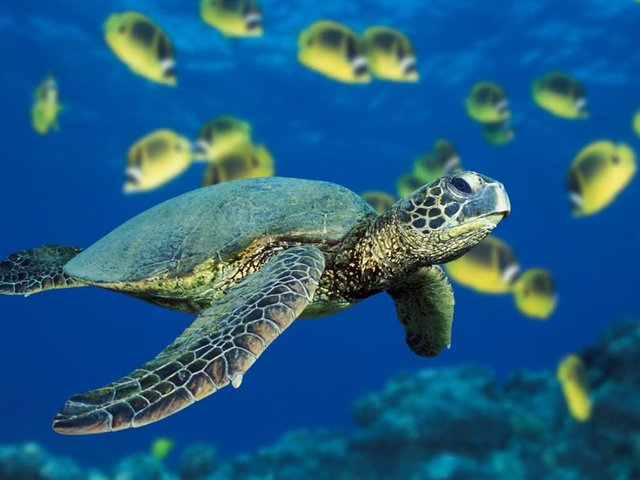
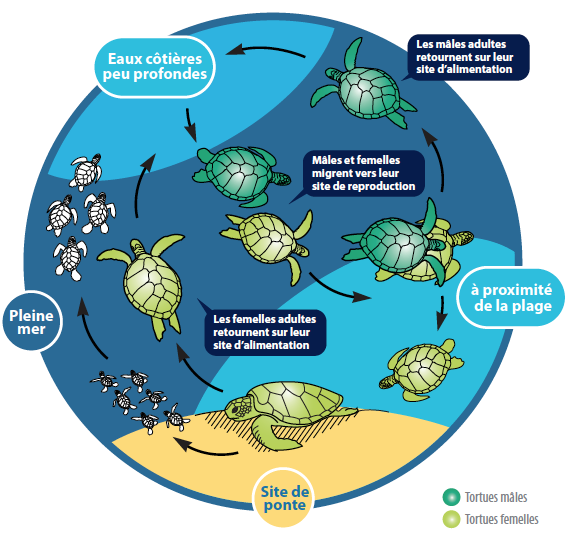
Very nice post, I love the videos you put :) I learned a lot of little things following this post, thank you :]
@ lndesta120282 yes i also love this sea animals. and I never let him out to sea with my friend
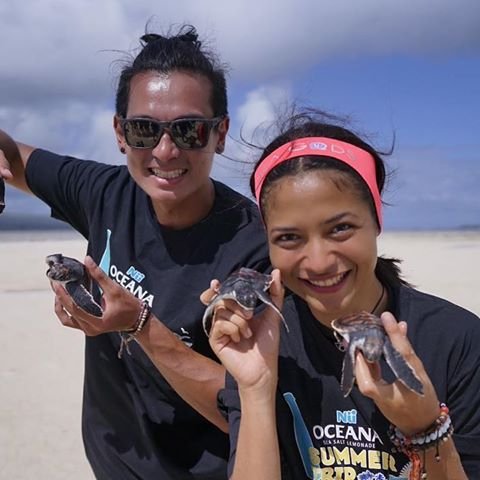
Great! You are wonderful 😘
Thankyou @lndesta120282😙
With us in the Mediterranean Sea, there is very little chance to see live acorns, so I send my kids in the suit costumes for carnival.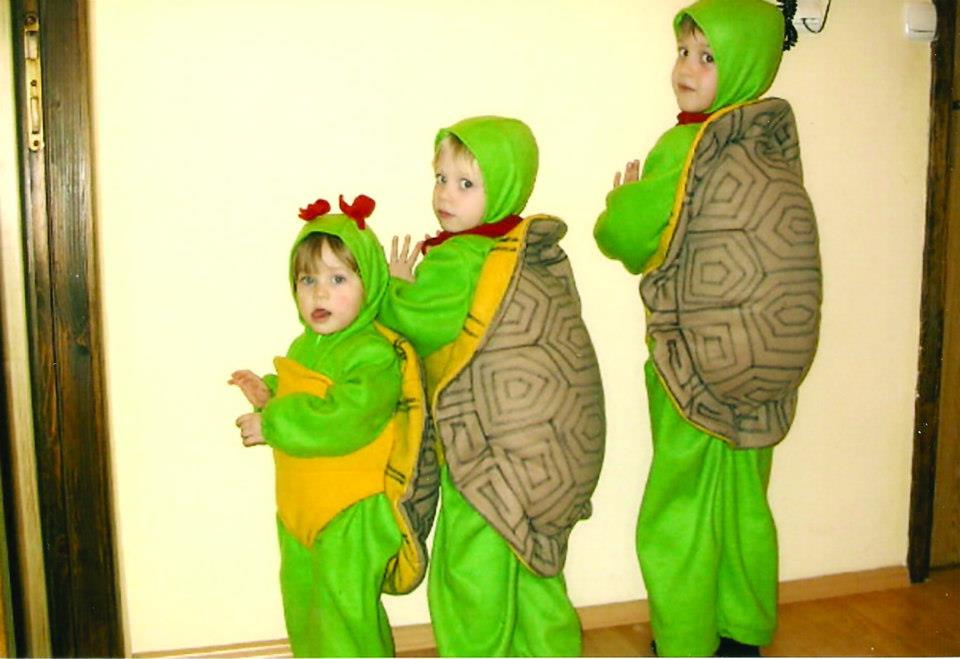 :-)
:-)
I hope that you arelike this turtles
Hahaha, really you have taught something about the turtles, i did not know that they hibernate, I have love the photo of the sea turtles, they look good. i used to see them when i was still a child and i was told they move for years and they always come from the sea. But you have again reminded me about those in the Kabaka (King)'s palace in Buganda kingdom which i was told they have 400 years and above. i will send the photos.
This is my one of digital art. I met seaturtuls in Hawaii. I love them too.❤️️
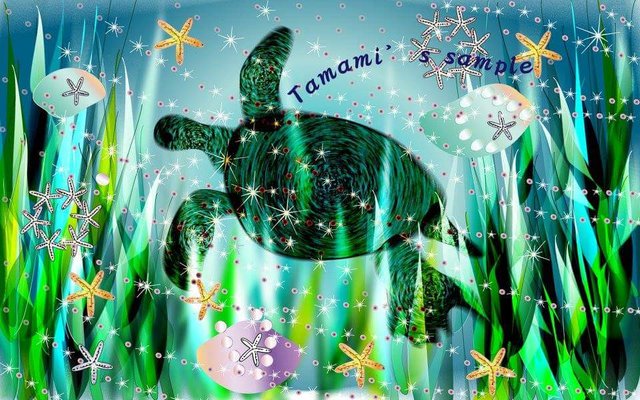 s
s
waouw nice 😍
I like turtles...
Wow huge turtle in the video!!!!!!!!!!
I saw it only in aquarium.
It's awkward they live in water and lay their eggs on land
Hi, I like tortoises, but to be honest I wrote that I might get upvote